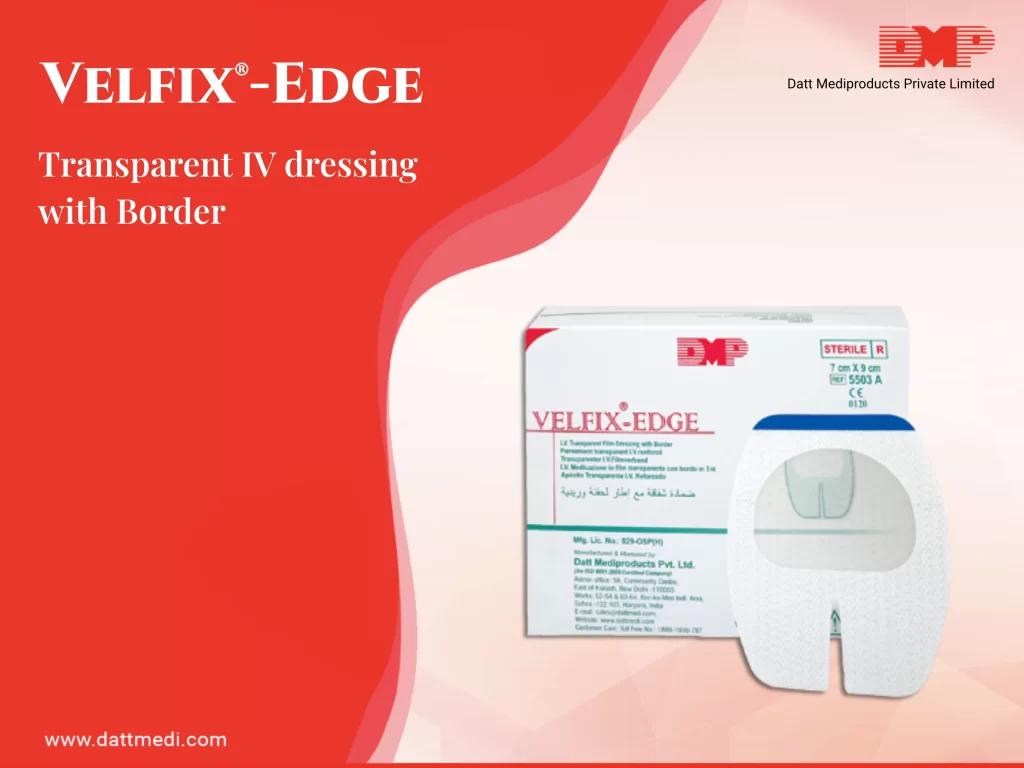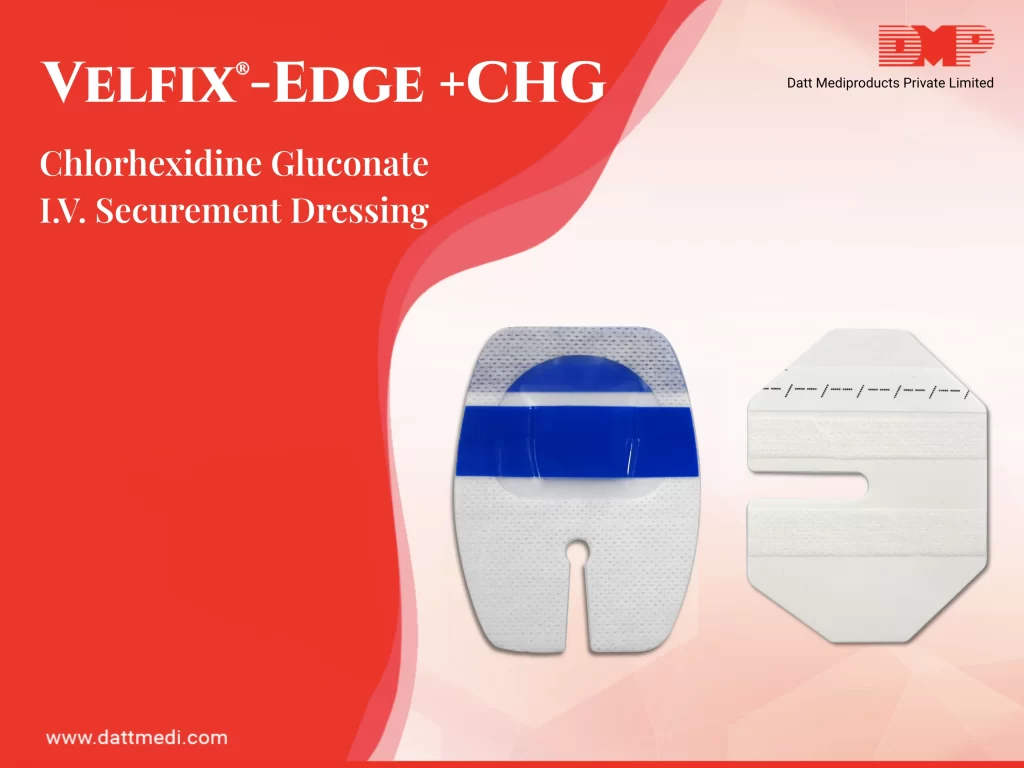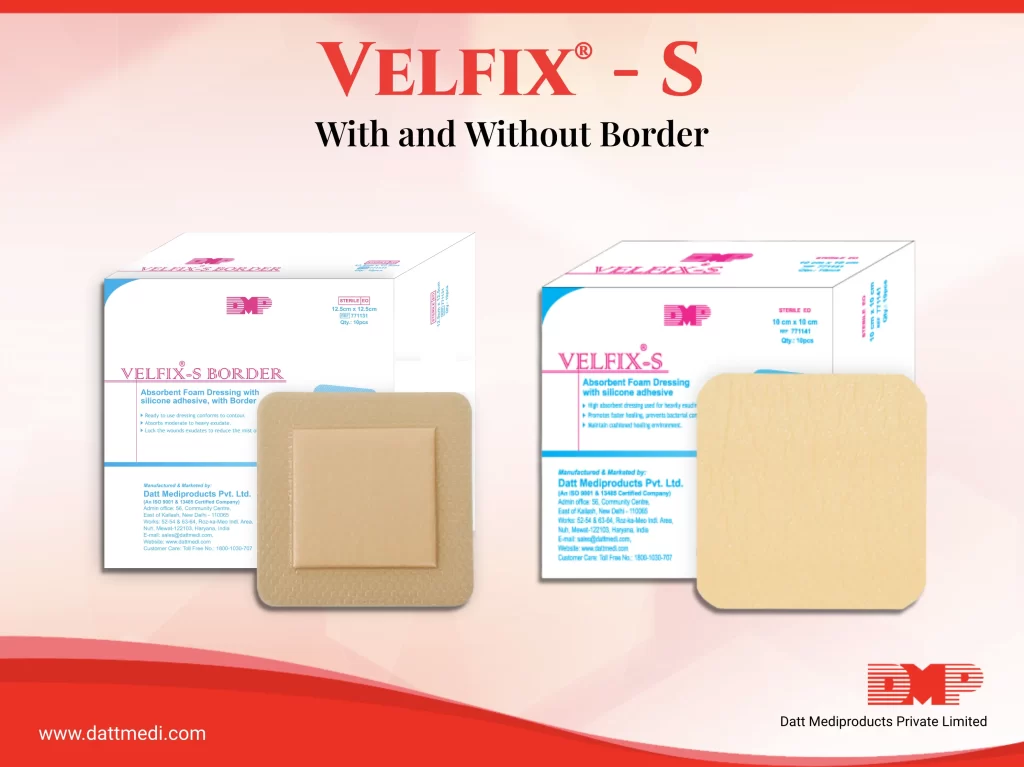
Intravenous (IV) cannulation is a common medical procedure used to administer medications and fluids directly into the bloodstream. While the benefits of IV therapy are clear, the procedure also poses risks, including the possibility of infection at the site of cannula insertion. When it comes to IV therapy, securing the cannula in place is critical for the patient’s safety and comfort.
We present Velfix® -Edge, a specialized IV dressing designed specifically for fixing cannulas, which is used to reduce the associated risks. Velfix® -Edge is a non-woven bordered IV dressings coated with latex free adhesive. Frame delivery system for precise placement. Highly conformable to provide solutions for difficult catheters and IV sites. Promotes best practice and enhanced patient comfort with additional securement strips and date labels. Window Framed delivery system allows for one handed application and prevents dressing sticking to itself. Deep notched design forms a barrier to secondary infection and bacterial contamination.
Some of the unique features and benefits of Velfix® -Edge:
- It has a window frame design that enables continuous observation of the IV site, which is important for monitoring the patient’s condition and detecting any potential complications.
- It offers a waterproof sterile barrier that protects the site from external contaminants, reducing the risk of infection.
- It has stabilization non-woven borders that ensure maximum securement, breathability, and wear time.
- Its notched design helps to discourage edge lift, which could compromise the sterile environment of the site.
- It comes with two securement tape strips and a pre-printed documentation label, which facilitates proper labelling and documentation of the procedure.
- It is easy to handle with gloves and allows for single-handed application, which saves time and improves efficiency.
There are several IV dressings available in the market but Velfix® -Edge stands out from the competition and enables medical practitioners to easily monitor the cannula insertion site.
Instructions for Use:
Velfix® -Edge must be used correctly in order to be effective. Before applying the dressing, the skin in the area of the cannula insertion site needs to be properly washed and dried. The Velfix® -Edge dressing can be placed directly to the skin once the region has been cleaned and dried, ensuring that the cannula stays firmly in place. As directed, the dressing should be changed often.
Precautions and Warnings:
The use of Velfix® -Edge on wounds or other skin-compromised areas is not recommended. It ought to be used exclusively for cannula fixation. Additionally, patients should not use Velfix® -Edge if they have allergies to adhesives or other substances.
Also, to maintain its efficacy and safety, it is crucial to carefully follow the usage instructions and adopt the appropriate safety measures. For securing cannulas, Velfix® -Edge is a great choice and is available in a range of tailored sizes.



